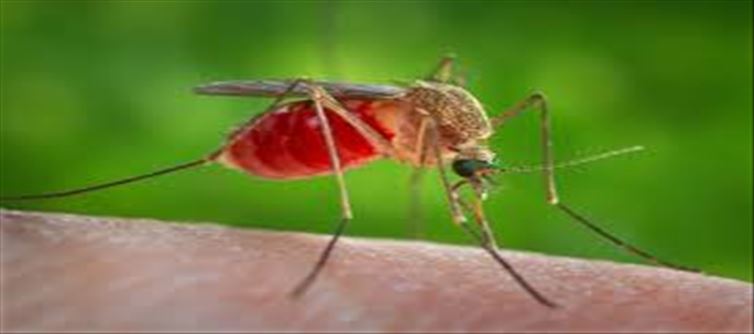Pushpa Telugu Movie Review, Rating
పుష్ప తెలుగు సినిమా రివ్యూ ,రేటింగ్
-
Samantha Ruth Prabhu Spills the Beans — A Jam-Packed Year and Possibly More?
-
Engaged and Radiant: Rashmika Mandanna Turns Heads at Mumbai Event
-
Raashi Khanna’s Saree Game Is Pure Poetry — Flirty, Elegant, Unstoppable
-
Khushi Kapoor Channels Sridevi Elegance, Glows Like Pearls on Ramp
-
Pooja Hegde’s Birthday Reveals Her Genuine Sid
-
Inside Vijay’s Infamous Black Bag: Questions Mount as CBI Steps In
-
UPI Goes Global: Indian Tourists May Soon Pay Anywhere in Japan — Here’s How!
-
BJP’s Weaponization of India’s Investigative Agencies - The Dark Politics of CBI and Income Tax Raids
-
The World on the Brink of a New Flu Crisis - Asia on Red Alert
-
Two Journalists. One Legacy. Two Directions — The Unwritten Story of Palki & Sanket Upadhyay
-
EPFO Rules 2025 Are EPIC THEFT: Modi Govt Locks Up Your Own Money for a Year
-
FDs Won’t Make You Rich — They’ll Just Help You Die Peacefully Broke
-
Why India Keeps Suffering: Because We Keep Voting for People Who Treat Politics Like a Weekend Job
-
Karur Tragedy: 41 Dead, Zero Accountability — The Ghost Hand That Controls the CBI?
-
RSS Marches Through Filth — The Perfect Metaphor for India’s Rotting Reality
-
The Songbird in Shackles: How Fear, Power, and Politics Silenced Maithili Thakur’s Free Voice
-
The ₹500-Crore Titans: How South Cinema Conquered the Box Office and Left Bollywood in the Dust!
-
The Fall of Bollywood: When the South Remembered Its Roots and the North Forgot Its Voice
-
How Kiara Advani’s Glamour Rescued a ₹300-Crore Disaster
-
Radhika Merchant’s Backless Saree Look Steals Spotlight - Her Back Pose Set the Internet on Fire
-
Samantha Ruth Prabhu’s October Insta Dump Is Packed With Secrets—And Fans Are Obsessed
-
The Untold Story of Samantha Ruth Prabhu: Fame, Struggle, Disease, and Unstoppable Comeback
-
DMK Targets or PR Tricks? The Controversy Behind Pooja Hegde’s Instagram Story
-
‘Milky Body’ Comment on Tamannaah Bhatia Backfires By Senior Actor
-
Keerthy Suresh’s Private Love Story Revealed
-
This Train Serves Every Meal Free - Not Rajdhani, Not Shatabdi, Not Vande Bharat
-
White Socks Walk a Kilometer in Japan — In India, 100 Meters Would Ruin Them
-
Trump Calls Meloni ‘Beautiful Young Woman’ at Gaza Summit — And the World Cringes
-
Poop Pics for Profit: Earn Rs 1,000 by Reporting India’s Filthy Highways
-
100 Meters of Highway Gone — And Nobody’s to Blame (Yet)
-
When Ajith Spoke, It Echoed Integrity — When Vijay Stayed Silent, It Screamed Confusion
-
India’s Statue Obsession Is the New Poverty Porn - ₹1,800 Crores of Bronze — 0 Crores of Vision
-
China to U.S.: We Don’t Care Anymore — The Empire Just Flipped the Trade Map
-
Double Blue Ticks? Nah. Arattai Should Just Say ‘Read by Amit Shah’, Suggests the Internet
-
The Fall of a Man Who Dared to Question Modi and Shah - Why a 1984 Case Suddenly Matters in 2025
-
“1.54% Inflation, 100% Struggle” — The Great Indian Price Lie
-
“So Clean, So Civil, So Non-BJP?” — India’s Civic Sense Ranking Is a Slap of Reality on Political Narratives
-
“Named in a Suicide Note. Now Ruling the Ballot.” — India’s Darkest Bureaucratic Irony
-
“Bangalore Isn’t Yours Until You Speak Kannada” — Sridhar Vembu’s Statement Breaks the Internet
Empowering 140+ Indians within and abroad with entertainment, infotainment, credible, independent, issue based journalism oriented latest updates on politics, movies.
India Herald Group of Publishers P LIMITED is MediaTech division of prestigious Kotii Group of Technological Ventures R&D P LIMITED, Which is core purposed to be empowering 760+ crore people across 230+ countries of this wonderful world.
India Herald Group of Publishers P LIMITED is New Generation Online Media Group, which brings wealthy knowledge of information from PRINT media and Candid yet Fluid presentation from electronic media together into digital media space for our users.
With the help of dedicated journalists team of about 450+ years experience; India Herald Group of Publishers Private LIMITED is the first and only true digital online publishing media groups to have such a dedicated team. Dream of empowering over 1300 million Indians across the world to stay connected with their mother land [from Web, Phone, Tablet and other Smart devices] multiplies India Herald Group of Publishers Private LIMITED team energy to bring the best into all our media initiatives such as https://www.indiaherald.com





 click and follow Indiaherald WhatsApp channel
click and follow Indiaherald WhatsApp channel